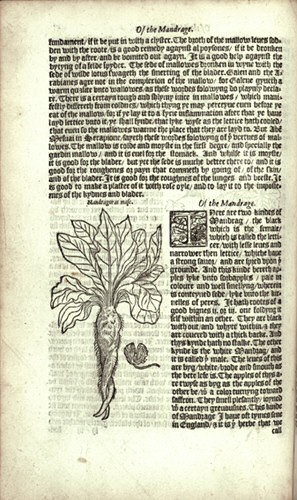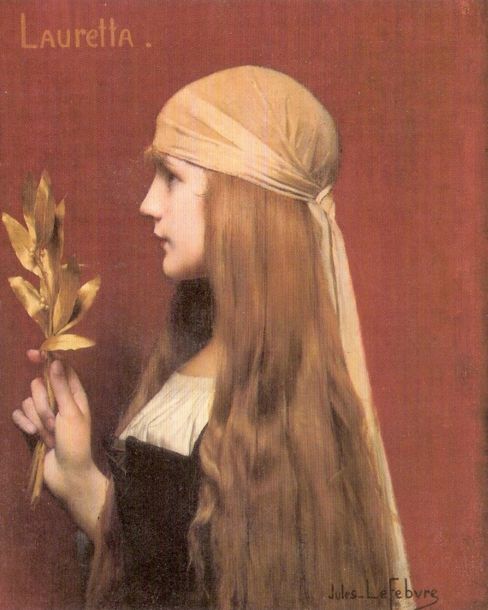|
Jasminum Officinale
''Jasminum officinale'', known as the common jasmine or simply jasmine, is a species of flowering plant in the olive family Oleaceae. It is native to the Caucasus and parts of Asia, also widely naturalized. It is also known as summer jasmine, poet's jasmine, white jasmine, true jasmine or jessamine, and is particularly valued by gardeners throughout the temperate world for the intense fragrance of its flowers in summer. It is also the National flower of Pakistan. Description ''Jasminum officinale'' is a vigorous, twining deciduous climber with sharply pointed pinnate leaves and clusters of starry, pure white flowers in summer, which are the source of its heady scent. The leaf has 5 to 9 leaflets. Etymology The Latin specific epithet ''officinale'' means "useful". Distribution It is found in the Caucasus, northern Iran, Afghanistan, Pakistan, the Himalayas, Tajikistan, India, Nepal and western China (Guizhou, Sichuan, Xizang (Tibet), Yunnan). The species is also widely cul ... [...More Info...] [...Related Items...] OR: [Wikipedia] [Google] [Baidu] |
Carl Linnaeus
Carl Linnaeus (; 23 May 1707 – 10 January 1778), also known after his ennoblement in 1761 as Carl von Linné Blunt (2004), p. 171. (), was a Swedish botanist, zoologist, taxonomist, and physician who formalised binomial nomenclature, the modern system of naming organisms. He is known as the "father of modern taxonomy". Many of his writings were in Latin; his name is rendered in Latin as and, after his 1761 ennoblement, as . Linnaeus was born in Råshult, the countryside of Småland, in southern Sweden. He received most of his higher education at Uppsala University and began giving lectures in botany there in 1730. He lived abroad between 1735 and 1738, where he studied and also published the first edition of his ' in the Netherlands. He then returned to Sweden where he became professor of medicine and botany at Uppsala. In the 1740s, he was sent on several journeys through Sweden to find and classify plants and animals. In the 1750s and 1760s, he continued to collect an ... [...More Info...] [...Related Items...] OR: [Wikipedia] [Google] [Baidu] |
Central Asia
Central Asia, also known as Middle Asia, is a subregion, region of Asia that stretches from the Caspian Sea in the west to western China and Mongolia in the east, and from Afghanistan and Iran in the south to Russia in the north. It includes the former Soviet Union, Soviet republics of the Soviet Union, republics of Kazakhstan, Kyrgyzstan, Tajikistan, Turkmenistan, and Uzbekistan, which are colloquially referred to as the "-stans" as the countries all have names ending with the Persian language, Persian suffix "-stan", meaning "land of". The current geographical location of Central Asia was formerly part of the historic region of Turkestan, Turkistan, also known as Turan. In the pre-Islamic and early Islamic eras ( and earlier) Central Asia was inhabited predominantly by Iranian peoples, populated by Eastern Iranian languages, Eastern Iranian-speaking Bactrians, Sogdians, Khwarezmian language, Chorasmians and the semi-nomadic Scythians and Dahae. After expansion by Turkic peop ... [...More Info...] [...Related Items...] OR: [Wikipedia] [Google] [Baidu] |
Aromatherapy
Aromatherapy is based on the usage of aromatic materials including essential oils and other aroma compounds, with claims for improving psychological and physical well-being. It is offered as a complementary therapy or as a form of alternative medicine, the first meaning alongside standard treatments, the second instead of conventional, evidence-based treatments. Aromatherapists, people who specialize in the practice of aromatherapy, utilize blends of supposedly therapeutic essential oils that can be used as topical application, massage, inhalation or water immersion. There is no good medical evidence that aromatherapy can either prevent, treat or cure any disease. Placebo-controlled trials are difficult to design as the point of aromatherapy is the smell of the products. There is disputed evidence that it may be effective in combating postoperative nausea and vomiting. History The use of essential oils for therapeutic, spiritual, hygienic and ritualistic purposes goes ba ... [...More Info...] [...Related Items...] OR: [Wikipedia] [Google] [Baidu] |
Essential Oil
An essential oil is a concentrated hydrophobic liquid containing volatile (easily evaporated at normal temperatures) chemical compounds from plants. Essential oils are also known as volatile oils, ethereal oils, aetheroleum, or simply as the oil of the plant from which they were extracted, such as oil of clove. An essential oil is essential in the sense that it contains the essence of the plant's fragrance—the characteristic fragrance of the plant from which it is derived. The term "essential" used here does ''not'' mean indispensable or usable by the human body, as with the terms essential amino acid or essential fatty acid, which are so called because they are nutritionally required by a living organism. Essential oils are generally extracted by distillation, often by using steam. Other processes include expression, solvent extraction, '' sfumatura'', absolute oil extraction, resin tapping, wax embedding, and cold pressing. They are used in perfumes, cosmetics, soaps, air ... [...More Info...] [...Related Items...] OR: [Wikipedia] [Google] [Baidu] |
Award Of Garden Merit
The Award of Garden Merit (AGM) is a long-established annual award for plants by the British Royal Horticultural Society (RHS). It is based on assessment of the plants' performance under UK growing conditions. History The Award of Garden Merit is a mark of quality awarded, since 1922, to garden plants (including trees, vegetables and decorative plants) by the United Kingdom, Royal Horticultural Society (RHS). Awards are made annually after plant trials intended to judge the plants' performance under UK growing conditions. Trials may last for one or more years, depending on the type of plant being analyzed, and may be performed at Royal Horticulture Society Garden in Wisley and other gardens or after observation of plants in specialist collections. Trial reports are made available as booklets and on the website. Awards are reviewed annually in case plants have become unavailable horticulturally, or have been superseded by better cultivars. Similar awards The award should not be ... [...More Info...] [...Related Items...] OR: [Wikipedia] [Google] [Baidu] |
Royal Horticultural Society
The Royal Horticultural Society (RHS), founded in 1804 as the Horticultural Society of London, is the UK's leading gardening charity. The RHS promotes horticulture through its five gardens at Wisley (Surrey), Hyde Hall (Essex), Harlow Carr (North Yorkshire), Rosemoor (Devon) and Bridgewater (Greater Manchester); flower shows including the Chelsea Flower Show, Hampton Court Palace Flower Show, Tatton Park Flower Show and Cardiff Flower Show; community gardening schemes; Britain in Bloom and a vast educational programme. It also supports training for professional and amateur gardeners. the president was Keith Weed and the director general was Sue Biggs CBE. History Founders The creation of a British horticultural society was suggested by John Wedgwood (son of Josiah Wedgwood) in 1800. His aims were fairly modest: he wanted to hold regular meetings, allowing the society's members the opportunity to present papers on their horticultural activities and discoveries, to enc ... [...More Info...] [...Related Items...] OR: [Wikipedia] [Google] [Baidu] |
Variegation
Variegation is the appearance of differently coloured zones in the leaves and sometimes the stems and fruit of plants. Species with variegated individuals are sometimes found in the understory of tropical rainforests, and this habitat is the source of a number of variegated houseplants. Variegation is caused by mutations that affect chlorophyll production or by viruses, such as mosaic viruses, which have been studied by scientists. The striking look of variegated plants is desired by many gardeners, and some have deliberately tried to induce it for aesthetic purposes. There are a number of gardening books about variegated plants, and some gardening societies specialize in them. The term is also sometimes used to refer to colour zonation in flowers, minerals, and the skin, fur, feathers or scales of animals. Causes Chimeral Because the variegation is due to the presence of two kinds of plant tissue, propagating the plant must be by a vegetative method of propagation that ... [...More Info...] [...Related Items...] OR: [Wikipedia] [Google] [Baidu] |
Cultivars
A cultivar is a type of Horticulture, cultivated plant that people have selected for desired phenotypic trait, traits and when Plant propagation, propagated retain those traits. Methods used to propagate cultivars include: division, root and stem cuttings, offsets, grafting, micropropagation, tissue culture, or carefully controlled seed production. Most cultivars arise from purposeful human genetic engineering, manipulation, but some originate from wild plants that have distinctive characteristics. Cultivar names are chosen according to rules of the International Code of Nomenclature for Cultivated Plants (ICNCP), and not all cultivated plants qualify as cultivars. Horticulturists generally believe the word ''cultivar''''Cultivar'' () has two meanings, as explained in ''#Formal definition, Formal definition'': it is a classification category and a taxonomic unit within the category. When referring to a taxon, the word does not apply to an individual plant but to all plants that s ... [...More Info...] [...Related Items...] OR: [Wikipedia] [Google] [Baidu] |
William Turner (naturalist)
William Turner (1509/10 – 13 July 1568) was an English divine and reformer, a physician and a natural historian. He has been called "The father of English botany."Samson, Alexander. ''Locus Amoenus: Gardens and Horticulture in the Renaissance'', 2012 :4 He studied medicine in Italy, and was a friend of the great Swiss naturalist, Conrad Gessner. He was an early herbalist and ornithologist, and it is in these fields that the most interest lies today. He is known as being one of the first "parson-naturalists" in England. He first published '' Libellus de Re herbaria'' in Latin in 1538, and later translated it into English because he believed herbalists were not sharing their knowledge. Turner's works were condemned under Henry VIII and under Mary Tudor. Biography Early years Turner was born in Morpeth, Northumberland, in or around 1508. His father was probably a tanner of the same name. He studied at Pembroke Hall, Cambridge University, from 1526 to 1533, where he recei ... [...More Info...] [...Related Items...] OR: [Wikipedia] [Google] [Baidu] |
Walled Garden
A walled garden is a garden enclosed by high walls, especially when this is done for horticultural rather than security purposes, although originally all gardens may have been enclosed for protection from animal or human intruders. In temperate climates, especially colder areas, such as Scotland, the essential function of the walling of a garden is to shelter the garden from wind and frost, though it may also serve a decorative purpose. Kitchen gardens were very often walled, which segregated them socially, allowing the gardeners, who were usually expected to vanish from the “pleasure gardens” when the occupants of the house were likely to be about, to continue their work. The walls, which were sometimes heated, also carried fruit trees trained as espaliers. Historically, and still in many parts of the world, nearly all urban houses with any private outside space have high walls for security, and any small garden was thus walled by default. The same was true of many rural ... [...More Info...] [...Related Items...] OR: [Wikipedia] [Google] [Baidu] |
Decameron
''The Decameron'' (; it, label=Italian, Decameron or ''Decamerone'' ), subtitled ''Prince Galehaut'' (Old it, Prencipe Galeotto, links=no ) and sometimes nicknamed ''l'Umana commedia'' ("the Human comedy", as it was Boccaccio that dubbed Dante Alighieri's ''Comedy'' "''Divine''"), is a collection of short stories by the 14th-century Italian author Giovanni Boccaccio (1313–1375). The book is structured as a frame story containing 100 tales told by a group of seven young women and three young men; they shelter in a secluded villa just outside Florence in order to escape the Black Death, which was afflicting the city. Boccaccio probably conceived of the ''Decameron'' after the epidemic of 1348, and completed it by 1353. The various tales of love in ''The Decameron'' range from the erotic to the tragic. Tales of wit, practical jokes, and life lessons contribute to the mosaic. In addition to its literary value and widespread influence (for example on Chaucer's ''Canterbury Ta ... [...More Info...] [...Related Items...] OR: [Wikipedia] [Google] [Baidu] |


.png)



.jpg)

